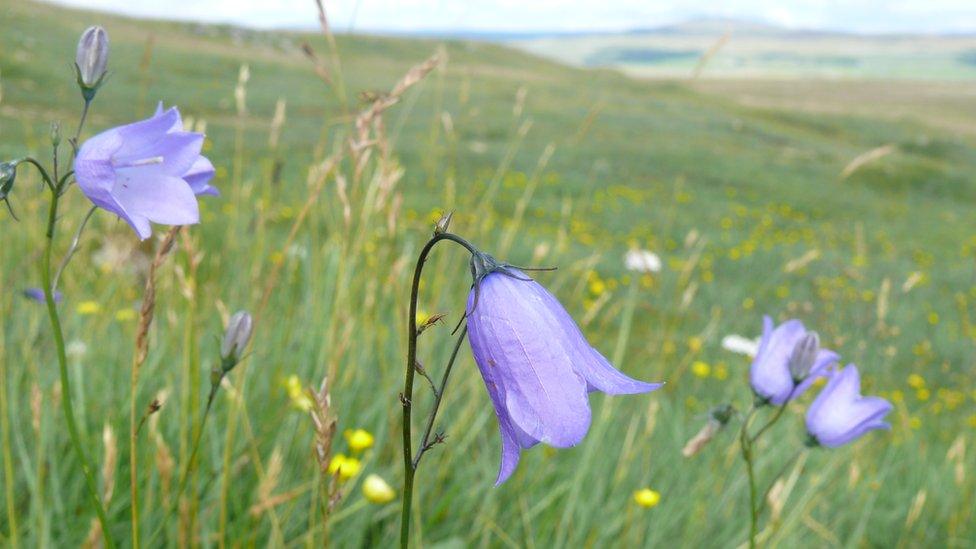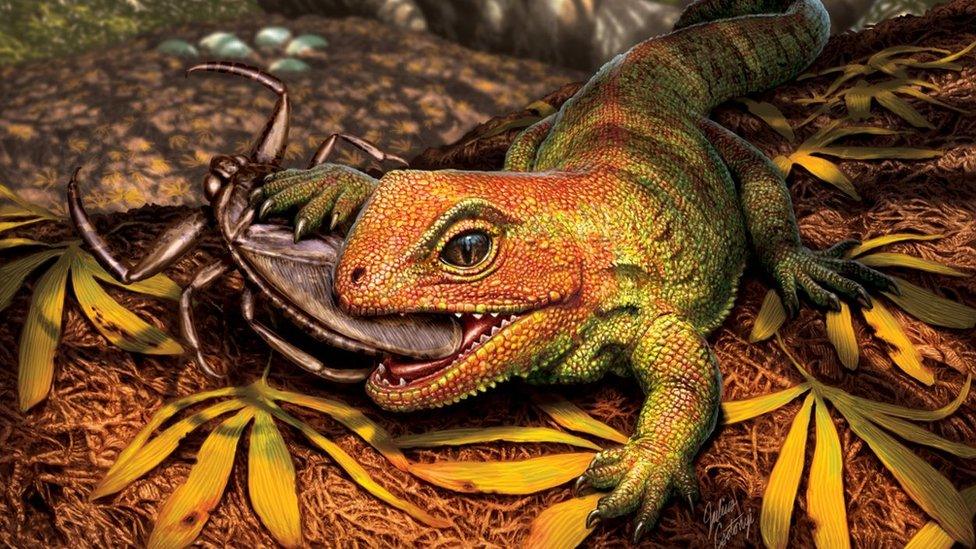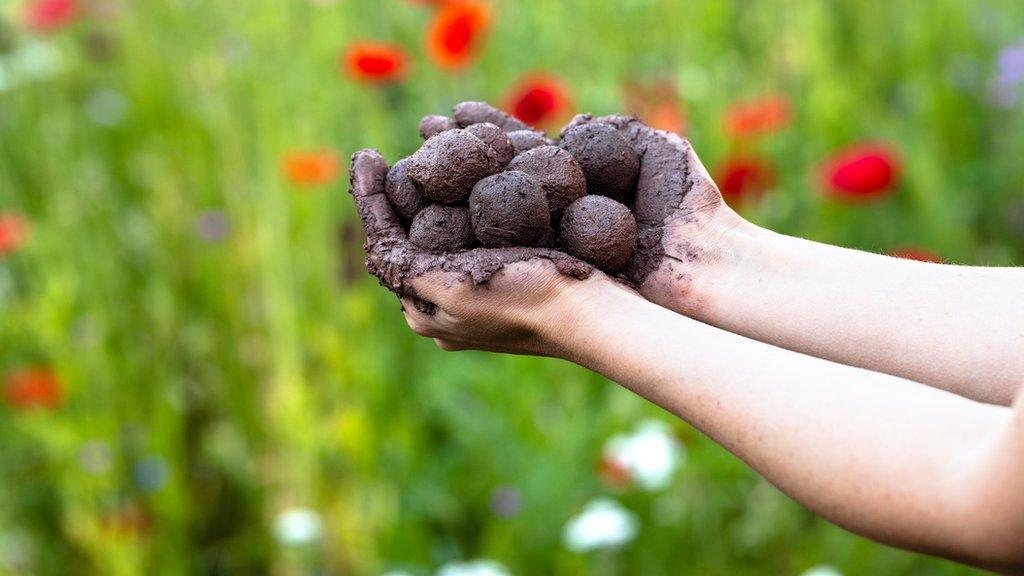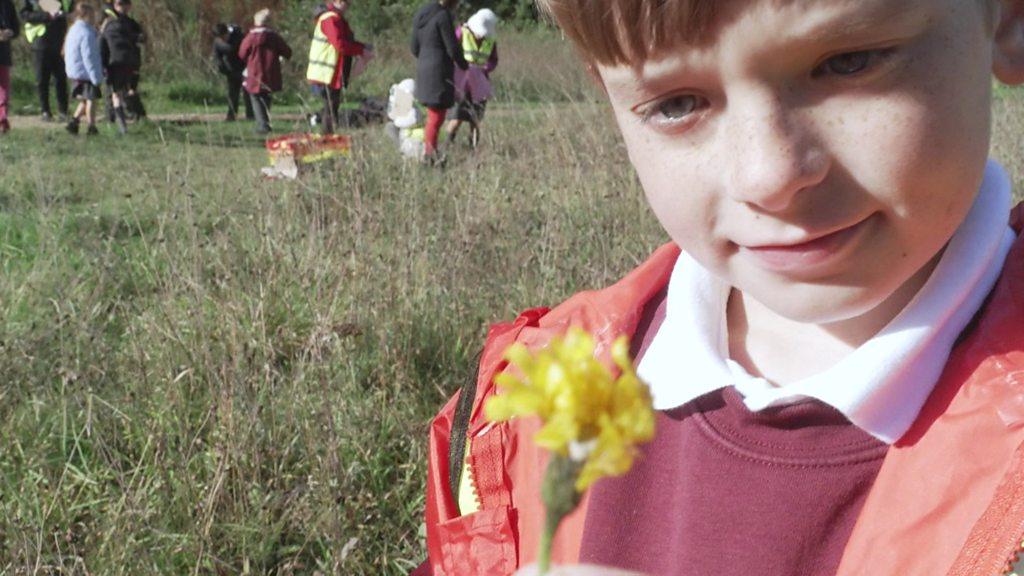Plant Atlas study shows 'devastating loss' to native plant species
- Published
- comments

Harebells are one of the native species which has seen a big decline
A special project looking into how plant life in the UK and Ireland has changed has found a "devastating loss" to native plant species.
Thousands of botanists from the Botanical Society of Britain and Ireland (BSBI) have spent the last 20 years collecting data on changes in British and Irish flora.
They said their study Plant Atlas 2020 is the most in-depth survey of the British and Irish flora ever undertaken.
How the survey was conducted:
8,500 volunteers visited 10x10km sites in 99% of the UK and Ireland to record flowering plants, ferns and charophytes
Many sites were visited multiple times in different seasons to record variety
A total of 26 million records were made over 20 years
It builds on two previous Atlas surveys undertaken by the BSBI before the year 2000.
The researchers found that 53 percent of plants originally found in Britain, know as native plants, have declined.
As a result non-native plants - those which originally come from other countries - now outnumber native plants in the wild.
This is something the experts say will have a massive impact on insects and other species that depend on native plants.

Sitka Spruce is one of the species that has become invasive
Although many non-native species don't cause damage to native species, some such as New Zealand Pigmyweed and Sitka Spruce have become invasive.
This mean they disrupt the ecosystem that the native plants thrived in, and as they have been spreading more quickly than the native species, they are taking the space and natural resources native species would have had.
What has happened to native plants?
The decline has come as a result of human impacts such as more intense farming and different methods being used over the last 50-70 years, which has resulted in changes to habitats.
More land has been cleared for animals to graze on and damp meadows have been drained, leading to substantial declines in plants such as Devil's-bit Scabious.
Traditional grasslands have been reseeded or over-fertilised, with the result that 62 percent of our ancient wildflowers such as Corn Marigold have now disappeared.
Other major declines have been seen when it comes to Heather and Harebell.

Snow Pearlwort is one species that has been affected by climate change
Climate change has also been partly responsible, and the main cause when it comes to the declines of some mountain plants such as Alpine Lady-fern, Alpine Speedwell and Snow Pearlwort.
These species depend on snowfall.
Peatland habitats - which experts say will be essential in the fight to combat climate change - are being impacted by species such as Sitka Spruce, which is able to regenerate into moorlands and peatlands, reducing their ability to help remove carbon.
The study also found that montane plants, which are normally found in Mediterranean countries, have also declined due to climate change - but some southern species such as Bee Orchid, have benefited and spread further north.
The decline of our beautiful native plants is heart breaking and has consequences for us all.
Craig Bennett is chief executive of The Wildlife Trusts which helped fund the study being published.
He has raised concerns about wildflowers and all the species that depend on them including insects, bats and birds - but has said it's not too late to stop the "catastrophe", through new government schemes and more protection for Local Wildlife Sites.
Dr Kevin Walker, BSBI Head of Science and Plant Atlas 2020 co-author, added: "There's lots we can do to reverse these declines, but the most important are to increase the protection plants receive, extend the habitat available to them, and to place their needs at the very heart of nature conservation."
- Published2 January 2023

- Published20 April 2021

- Published28 February 2023

